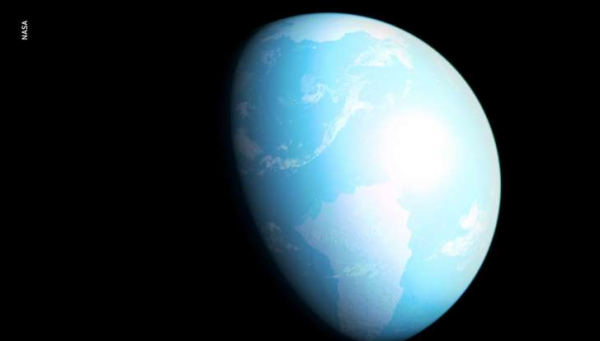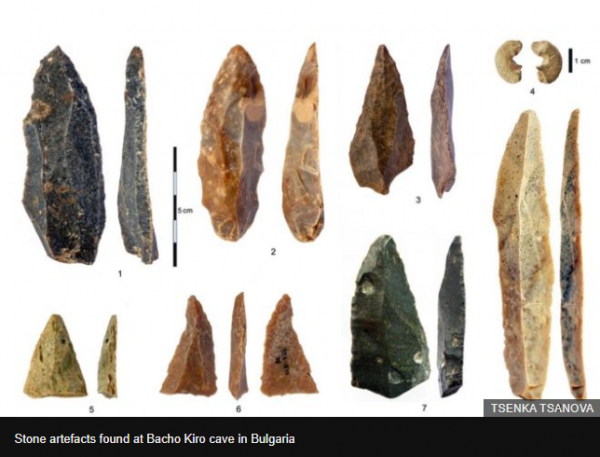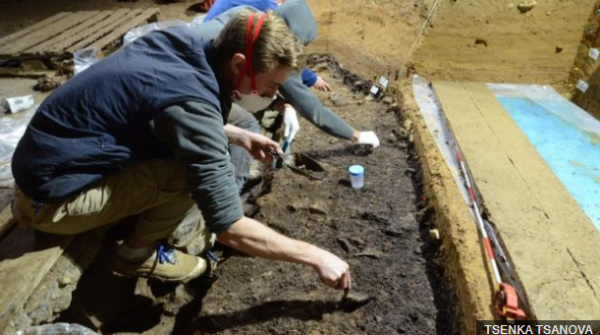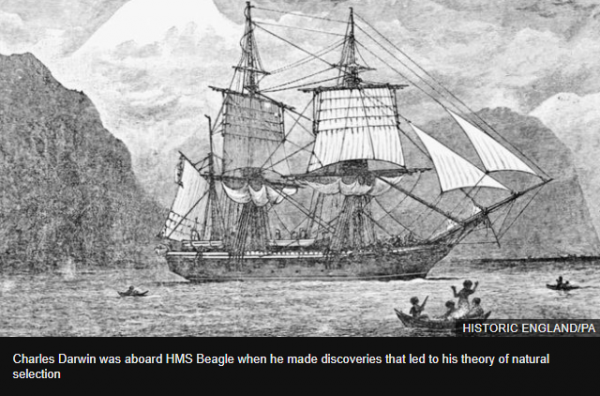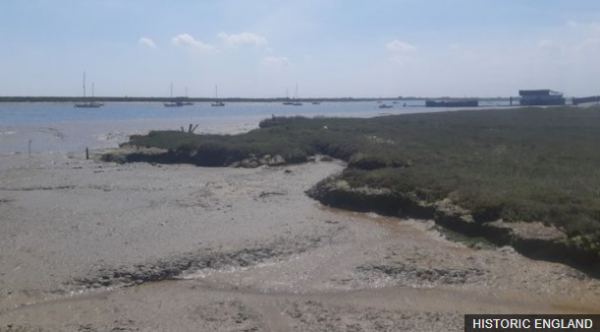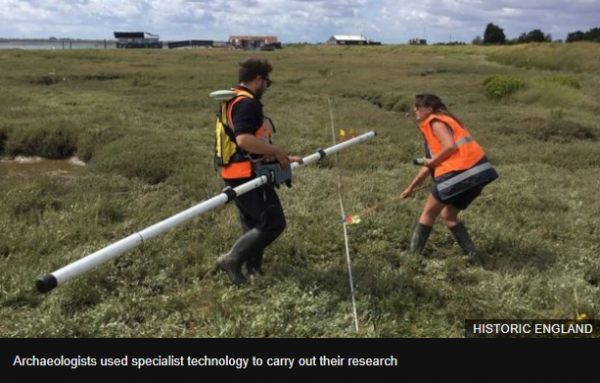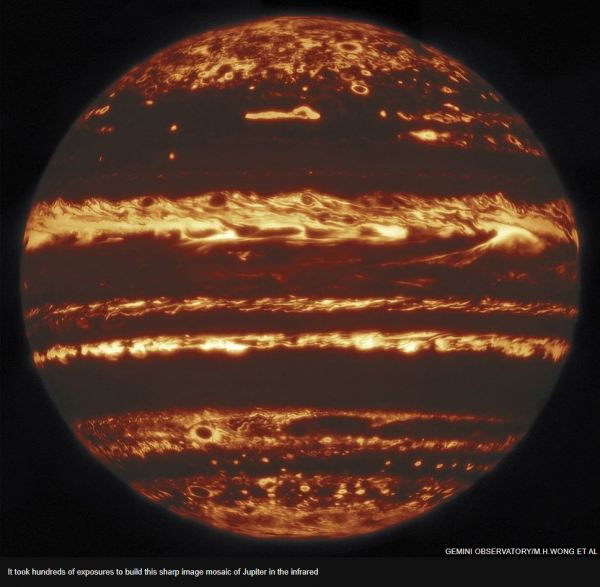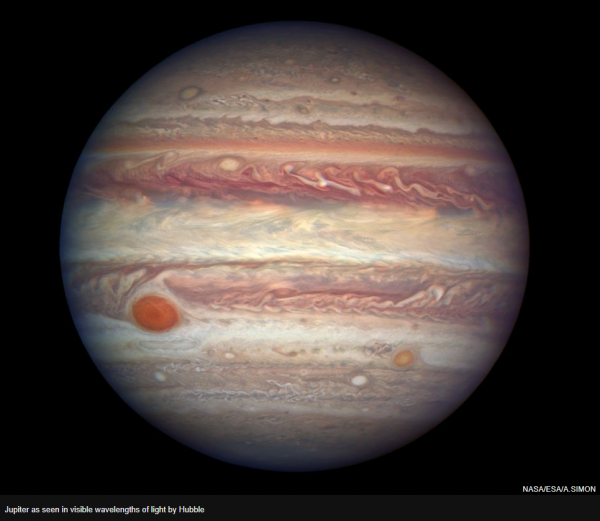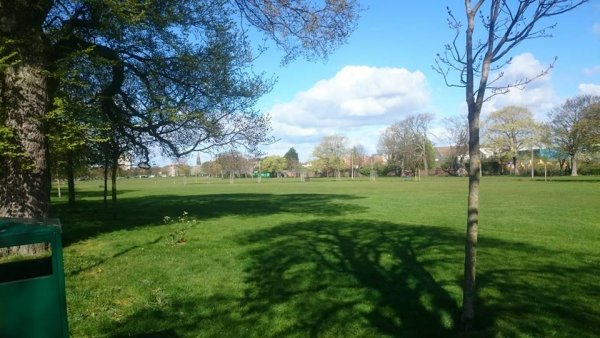-
Posts
20,850 -
Joined
-
Last visited
-
Days Won
49
Everything posted by CaaC (John)
-
That's one of my biggest hates and as I mentioned Piers Morgan is the biggest prick going for that, he couldn't interview a fucking horse without cutting in with every neigh, he should look at old clips of the likes of David Frost, Derek Norden and others in interviewing someone, he would see the proper way of interviewing. Going back to your works bit I lost my cool once while training a security officer in my building before I retired, this guy kept cutting in when I was talking and kept ignoring my hand raised and saying "Stop cutting in please when I am talking...". I lost the plot completely when he said "Sorry boss, ok..." and he started to pat me on the top of my head and I yelled "STOP PATTING ME ON MY HEAD...I'ME NOT A FUCKING DOG!!!!", that did shut him up and he apologised and believe it or not after training he became a great security officer and was a member of our security team for a long while.
-
One-in-a-million: 'Super-Earth' discovered near the centre of our galaxy Another day, another super-Earth? Not so fast. This one really is special. Calling it "incredibly rare," New Zealand astronomers say that the planet "is one of only a handful that has been discovered with both size and orbit comparable to that of Earth," according to a statement. The research about the discovery was published recently in a study in the Astronomical Journal. © NASA Super-earth found, only 31 light-years away How does this distant world and its star compare to our neighbourhood? According to the study, the super-Earth's host star is about 10% the mass of our sun, and the planet would have a mass somewhere between that of Earth and Neptune. It would also orbit its star at a location between Venus and Earth. However, as for life, or water, study authors say not to get our hopes up: "Although it’s not too much bigger than Earth, and orbiting its star at a similar distance, this planet would be very cold because its star is smaller than the sun and emits much less light," study co-author Michael Abrow of the New Zealand's University of Canterbury told USA TODAY. "Water could not exist in a liquid state and the likelihood of life would be very low," he said. "Only a very few planets have been detected that may have suitable conditions for life." Another difference: Due to the host star having a smaller mass than our sun, the planet would have a "year" of approximately 617 days. Study lead author Antonia Herrera-Martin, also of the University of Canterbury, said the planet was discovered using a technique called "gravitational microlensing." View on the planet Earth from the Moon surface. Elements of this image are furnished by NASA “The combined gravity of the planet and its host star caused the light from a more distant background star to be magnified in a particular way," he said. "We used telescopes distributed around the world to measure the light-bending effect.” The microlensing effect is rare, he said, with only about one in a million stars in the galaxy being affected at any given time. In addition, this type of observation does not repeat, and the probabilities of catching a planet at the same time are extremely low, Martin said. https://www.msn.com/en-gb/news/techandscience/one-in-a-million-super-earth-discovered-near-center-of-our-galaxy/ar-BB143Ekq?li=BBoPWjQ
- 1,657 replies
-
- space exploration
- astronomy
-
(and 1 more)
Tagged with:
-
Pissed myself laughing at you 2, at first I thought it was going to be post-meltdown time and this thread getting locked but it goes to show you that I am a newbie still on here and you 2 are bum buddies... ...not that way of thinking...gulp I wished to fuck I was around in the previous forums with you lot in here, I would not have been a newbie in here then but a golden oldie in the true sense.
-
-
FFS Coronavirus: Homeless man charged for being outside ‘without reasonable excuse’ under lockdown law But the law states that the restriction “does not apply to any person who is homeless”. A judge challenged the Crown Prosecution Service (CPS) over the charge during a hearing at Westminster’ Magistrates Court on Monday. District Judge Alexander Jacobs asked: “Is it not a defence that the regulation doesn't apply to a person who is homeless? “If he is homeless then the charge 'that he left the place he was living, namely no fixed address' doesn't make sense to me.” https://www.msn.com/en-gb/news/coronavirus/coronavirus-homeless-man-charged-for-being-outside-without-reasonable-excuse-under-lockdown-law/ar-BB13Xjo7?li=AAnZ9Ug
-
He is a twat of the highest order, watching him doing an interview live is a waste of fucking space, he talks through people, asks them a question then cuts in when they try to get their point of view across and rants on like a fucking idiot, he did it the other morning when they had Nicola Sturgeon on, he asked her questions and whenever she tried to answer all he did was bloody cut in. When Wenger was in charge of the Gunners he ranted on that he should be gone asp as he was bringing Arsenal down, Wenger went and now Arsenal is no better of than when Wenger was in charge and he does not say fuck all about the managers after Wenger.
-
-
Longer overlap for modern humans and Neanderthals Modern humans began to edge out the Neanderthals in Europe earlier than previously thought, a new study shows. Tests on remains from a cave in northern Bulgaria suggest Homo sapiens was there as early as 46,000 years ago. This is up to 2,000 years older than evidence from Italy and the UK. Around this time, Europe was populated by sparse groups of Neanderthals - a distinct type of human that vanished shortly after modern humans appeared on the scene. There's considerable debate about the length of time that modern humans overlapped with Neanderthals in Europe and other parts of Eurasia. This has implications for the nature of contact between the two groups - and perhaps clues to why Neanderthals went extinct. Two new scientific papers (here and here) describe the finds at Bacho Kiro cave. A tooth and four bone fragments were identified as broadly human based on their anatomical features. Helen Fewlass, from the Max Planck Institute for Evolutionary Anthropology in Leipzig, Germany, and colleagues determined their ages using scientific techniques. Their analysis, in Nature Ecology & Evolution, says the remains yielded ages between 46,000 and 43,000 years ago, assigning them to a stage known as the Initial Upper Palaeolithic. In the other paper, published in Nature journal, Jean-Jacques Hublin, also from the Max Planck Institute, and team members, detail features of the tooth that are found in modern humans but are absent from Neanderthals. Furthermore, they were able to retrieve DNA from these remains, demonstrating that they belonged to Homo sapiens and not their evolutionary cousins. Prof Chris Stringer, research leader for human evolution at the Natural History Museum in London, who was not involved with the latest study, said: "In my view, this is the oldest and strongest published evidence for an IUP (Initial Upper Palaeolithic) presence of H. sapiens in Europe, several millennia before the Neanderthals disappeared." The bones were found associated with stone tools and artefacts, such as pendants made from cave bear teeth. These resemble examples found at later sites believed to have been occupied by Neanderthals. This could suggest the two groups interacted sufficiently for modern humans to influence Neanderthal behaviour. On this point, Prof Stringer explained: "That is certainly possible, although evidence suggests that Neanderthals were producing jewellery made from eagle talons and shells long before the IUP." Dr Matt Pope, from the Institute of Archaeology at University College London, UK, and was not involved in either study, said: "If Neanderthals are living - as we tend to think from the genetic evidence - in relatively small dispersed groups of extended families, there may not be that need for complex social coding and symbolism. "This for me is the exciting thing - Neanderthals may pick up these kinds of symbolisms as they become enmeshed and entangled in the social networks of contact that Homo sapiens will be carrying with them as they colonise Europe." Ancient networking The upper date for the Bacho Kiro remains is older than previous evidence of early Homo sapiens settlement from Kents Cavern in Britain (a jawbone dating to between 44,200 and 41,500 years ago) and from the Italian site of Grotta del Cavallo (two teeth dating to 43,000-45,000 years ago and associated with artefacts belonging to the Uluzzian culture). However, both the British and Italian evidence has been dated using material from the soil layers they were found in. The new paper relied on dating the bones and teeth themselves. Prof Stringer said the Kents Cavern and Cavallo evidence was "not generally accepted because of uncertainties about their dating or morphology". A scientific paper published in 2014 proposed that Neanderthals disappeared from Europe between 41,000 and 39,000 years ago with a 95% probability. However, other scientists have found evidence that Neanderthals may have survived later in some areas. At the least, the new finds suggest there were around 5,000 years of chronological overlap between Neanderthals and modern humans in Europe. Dr Pope said there was "no sudden disappearance" of Neanderthals in Europe. "The new dates, if they're correct, are pushing back the co-existence of Neanderthals and modern humans a couple of thousand years even further than the evidence from Kents Cavern and the Uluzzian dates," he explained. "In some places, we're getting direct evidence for interbreeding events, which could be evidence of social networking and cohesion... but in other examples, we can still see evidence of clear Neanderthal morphologies, suggesting populations that aren't - to any degree - hybridising or being absorbed." Prof Stringer said initial dispersals of modern humans into Europe may have been by small bands which could not sustain their presence in the face of a larger Neanderthal presence. Indeed, DNA evidence suggests some of these early settlers contributed minimally to the gene pools of later populations. There is even earlier evidence of Homo sapiens in Europe. In 2019, researchers published evidence that a skull fragment from Apidima cave in Greece, dated to 210,000 years ago, belonged to Homo sapiens. However, scientists say this very early foray into Europe was not permanent, and the Apidima Homo sapiens population was later replaced by Neanderthals. https://www.bbc.co.uk/news/science-environment-52614870
-
Victorian Mothers Hid Themselves in Their Babies’ Photos https://www.msn.com/en-gb/news/offbeat/victorian-mothers-hid-themselves-in-their-babies-photos/ar-BB13WrVZ#image=1 Funny looking at one of the photo's (below) with a hand visible, if anybody came across that photo and did not know that it was a mother behind the baby in a black gown whatever and holding the baby still they would put that down as an unexplained spooky photo with a hand appearing.
-
Victorian Mothers Hid Themselves in Their Babies’ Photos SLIDES - 1/5 It’s taken for granted nowadays that mothers can photograph their little darlings anytime they like. Capturing every sweet, mischievous expression that crosses a child’s face is made easy by the smartphone camera always within reach. This is, of course, a recent development in motherhood. Consider instead the hidden mothers of 19th-century photographic-portrait studios, when long exposure times meant moms had to find a way to keep their little ones sitting still long enough to be seen, while also fading into the background themselves. Because 30-second exposure times and squirming children don’t mix very well, portrait studios often employed women who would help the young subjects stay immobile—while attempting to remain invisible—when mothers weren’t holding their children themselves. In the resulting images, children float uncannily within textiles that hide a human form, phantom limbs appear with no bodily attachment, and mothers hide their face under weirdly placed curtains or even directly behind their baby. Nearly 200 years before the selfie, mothers were perfecting the selfless. https://www.msn.com/en-gb/news/offbeat/victorian-mothers-hid-themselves-in-their-babies-photos/ar-BB13WrVZ#image=1
-
No Booths are here in Jock land buddy, I even asked the wife and she said "err?...never heard of them"
-
At Tesco's here in Leith they have hand sanitizers as you walk into the shop, you squirt it on your hands then they have staff beside trolleys inside the store with gloves on and hand sanitizers they squirt on the hand trolley bars and wiping them down, a lot of people wearing masks and gloves but I noticed there are quite a few pricks who walk into the store not bothering with masks or gloves, they don't bother wiping their hands with the sanitisers or following the arrows around the aisles and not bothering to keep a distance away from shoppers Fucking morons and as I have mentioned before they are the bastards who might get the virus and then scream blue murder and blame everybody under the sun except themselves, they should get people like these and put them into caves as they did in medieval times with lepers and warn people not to go near them.
-
I have noticed quite a few people wearing plastic gloves when shopping in Tesco's, it might end up everybody wearing spacesuits next as if we are shopping on the moon.
-
HMS Beagle: Dock for Darwin's ship gets protected status The remains of a rare 19th Century dock built for Charles Darwin's ship HMS Beagle has been recognised as a site of national importance. The submerged mud berth on the River Roach in Rochford, Essex, will now be protected against unauthorised change. The ship, launched in 1820, allowed Darwin to make observations that led to his theory of natural selection. "We are glad to see this site in a quiet corner of Essex given national protection," said Historic England. "This is a fascinating example of a rare piece of maritime history." Paglesham mudflats, near Southend, was thought to be the last resting place of the Beagle and investigations into the site began last year. The team from Wessex Archaeology were able to reveal the outline of the dock using a drone fitted with a specialist camera. Historic England commissioned the team to research the area ahead of the bicentenary of the vessel's launch this month. Darwin was aboard the ship on its second great voyage between 1831 and 1836 to survey the South American coast and the Galapagos Islands. 'Significant site' Following the Beagle's third and final exploratory voyage in 1843, it was refitted as a static watch vessel for the coastguard in 1845, until sold in 1870. Historic England said documentary evidence showed the ship was in the Rochford dock in 1870 and was likely dismantled there. The site has been designated as a scheduled monument by the Department for Digital, Culture, Media and Sport on the advice of Historic England. Rochford District Council also plan to build a new observation platform at the RSPB Wallasea Island Wild Coast Project, overlooking the River Roach where the ship was moored.
-
They more than likely borrowed or used it for the show?
-
Don't know? I had to Google Black Mirror as I did not have a clue what you meant.
-
Singapore using robot ‘dog’ to enforce social distancing https://www.msn.com/en-gb/news/offbeat/singapore-using-robot-dog-to-enforce-social-distancing/ar-BB13QSVi?ocid=mailsignout
-
Microplastics Discovered in 150-Year-Old Seabed 7,000 Feet Below Surface SLIDES - 1/4 Researchers have discovered microplastics buried in seabed sediments deep below the ocean surface that are more than 150 years old. The team identified the tiny plastic pieces in core samples collected from the Rockall Trough—a deep-sea basin located to the northwest of Scotland in the North Atlantic. Led by Winnie Courtene-Jones from the Scottish Association for Marine Science, the scientists examined the sediments—taken from more than 7,000 feet below the ocean surface—in order to reveal the extent and quantity of microplastics within them. They documented the microplastics throughout the upper 10 centimetres [3 inches] of the sediment core, according to a study published in the journal Marine Pollution Bulletin. Finding the plastics in these samples initially left the scientists baffled, given that this group of materials was not mass-produced until the mid-20th century. "We found microplastics were distributed throughout the sediment cores, up to 10 centimetres below the seafloor, which was the deepest we analyzed," Winnie Courtene-Jones told Newsweek. "It was very surprising to find microplastics so deep. The layers of sediment down to 4 centimetres [around 1.5 inches] deep were around 150 years old, yet microplastics were found throughout the core. Plastics were only mass-produced in the 1940s and 1950s, so, therefore, based on this discovery, we found plastics were present in the sediment long before they were mass-produced." In the study, the researchers propose a number of mechanisms for how the microplastics could have ended up in the 150-year-old sediments. Microplastics enter the marine environment from surface waters, either through the fragmentation of larger plastic items or directly through the synthetic fibres which are shed from our clothing during washing," Courtene-Jones said. "Gradually the microplastics sink from surface waters through the ocean until they reach the seabed." "Our findings that microplastics were present in sediments dating from long before mass plastic production indicate that processes within the seafloor might redistribute the microplastics deeper. Burrowing worms live in the seabed and can draw plastics deeper inside their burrows. Another mechanism is that microplastics can move between gaps, so-called pores, within the sediments and so the microplastics can move into deeper layers this way," she said. Microplastics—tiny pieces of plastic measuring less than 5 millimetres across, according to the most recognized definition—are widely distributed throughout the marine environment, having been documented everywhere from the seafloor to the surface waters of the Arctic. In fact, earlier this year scientists even announced the discovery of a new species of marine animal in the deepest trench on Earth, which was found to have microplastics in its body. However, most studies into this form of pollution have focused on beaches and coastal areas, meaning the global extent of microplastics on the deep seafloor remains largely unknown. Thus the findings of the latest study could help scientists to build a better picture of microplastic pollution. "The findings of this research indicate that microplastics can move through sediments in ways we did not know before," Courtene-Jones said. "This has implications for understanding the fate of plastics in our environment. Also, microplastics could alter the properties of the sediments and cause harm to the organisms living in them." "Other work has shown plastics can have detrimental impacts on animals, such as reducing their ability to feed and reproduce. The deep seafloor has been little studied in terms of plastic pollution, and our work indicates it could be an important accumulation site for microplastics,' she said. The latest study builds on previous research that Courtene-Jones and colleagues conducted more than two years ago. "In 2017, my research found microplastics contained within deep ocean water and that starfish and sea snails living on the ocean floor, over 2,000 meters deep had been eating microplastics. What's more, using historical specimens microplastics were found inside the guts of animals dating all the way back to the 1960s," she said. https://www.msn.com/en-gb/news/world/microplastics-discovered-in-150-year-old-seabed-7000-feet-below-surface/ar-BB13Lfn7#image=1
-
"I've seen shooting stars on a few occasions but how fucking insane would it be to see this with your own eyes" Not insane @Stan but to me, it would have been mystical, magical and awe-inspiring to know you have just seen something from the depths of outer space and maybe billions of years old...sigh...I wished I had seen it in person.
- 1,657 replies
-
- space exploration
- astronomy
-
(and 1 more)
Tagged with:
-
@nudge, it's him again.
-
Britain's £5 billion rival to EU's Galileo satellite project faces scrap Plans for Britain to join the space race with its own satellite navigation system face being scrapped as officials conclude that the ambitious post-Brexit project would be a waste of taxpayer funds. The Telegraph understands that mandarins in the Cabinet Office and Department for Business are pressing ministers to shut down work on the programme, which was set up after Brussels froze the UK out of the EU’s Galileo satellite scheme. Boris Johnson has signalled his support for the £5 billion projects, saying that Britain should “get going” on its own alternative to Galileo and America’s GPS, the system used to power smartphone location services, sat-navs and military applications. But civil servants are pushing for ministers to begin winding down the programme in the coming weeks, arguing that it would not represent value for money. Sir Mark Sedwill, the Cabinet Secretary, has urged ministers at the Department for Business, Energy and Industrial Strategy to decide on the project’s future as the Prime Minister focuses on the national response to the coronavirus pandemic. Sir Mark is understood to have argued that the satellite project is unaffordable. A British GPS could provide a private and ultra-accurate encrypted signal for military uses such as drones and missiles. The defence has been a central argument for a UK alternative after the armed forces were denied access to Galileo’s secure “PRS” signal. A recent report into a UK satellite system prepared for the UK Space Agency, seen by The Telegraph, has also concluded that it could earn hundreds of millions of pounds a year from private companies by 2030. The analysis by the consultancy McKinsey, shared with industry partners, estimated that a secure commercial service could make up to £480 million a year by licensing a secure signal to driverless car manufacturers and shipping firms, potentially covering the annual running costs of the system. The cost of the system has been estimated at £3 billion to £5 billion. Scrapping the project would be a major blow to Britain’s space industry, which has been seen as a national priority and which was due to play a key role in Galileo before the UK was barred from the programme. Global navigation systems use a constellation of satellites with atomic clocks to provide accurate location and timing signals for energy grids and mobile networks as well as smartphones. The British economy could lose an estimated £1 billion a day if the American GPS system currently relied on were to go offline. In 2018 Theresa May handed the UK Space Agency £92 million to assess the feasibility of a UK satellite system. The money is believed to have largely been spent, and Space Agency officials are now weighing up the cost of scrapping the programme or keeping their options open by maintaining industry contracts and deciding whether to go ahead at a later date. Mr Johnson backed the project in his first speech as Prime Minister last year, saying: “Let's get going now on our own position navigation and timing satellite and earth observation systems - UK assets orbiting in space, with all the long term strategic and commercial benefits for this country.” Britain was blocked from full access to Galileo, which is due to be fully operational this year, in 2018 after the EU said allowing a non-member state to use its military-grade signal would endanger security. A spokesman for the Department for Business, Energy and Industrial Strategy said: “The Government has made clear its ambitions for space and is developing a new National Space Strategy to bring long-term strategic and commercial benefits for the UK. “We are working closely with the UK Space Agency as it investigates the requirements, design specifications and costs of a UK Global Navigation Satellite System capability, within this ambition.” https://www.msn.com/en-gb/news/techandscience/britains-£5-billion-rival-to-eus-galileo-satellite-project-faces-scrap/ar-BB13O7Jq
- 1,657 replies
-
- space exploration
- astronomy
-
(and 1 more)
Tagged with:
-
Scientists obtain 'lucky' image of Jupiter Astronomers have produced a remarkable new image of Jupiter, tracing the glowing regions of warmth that lurk beneath the gas giant's cloud tops. The picture was captured in infrared by the Gemini North Telescope in Hawaii and is one of the sharpest observations of the planet ever made from the ground. To achieve the resolution, scientists used a technique called "lucky imaging" which scrubs out the blurring effect of looking through Earth's turbulent atmosphere. This method involves acquiring multiple exposures of the target and only keeping those segments of an image where that turbulence is at a minimum. When all the "lucky shots" are put together in a mosaic, a clarity emerges that's beyond just the single exposure. Planet Jupiter's winds run deep Jupiter Great Red Spot has deep roots Infrared is a longer wavelength than the more familiar visible light detected by the likes of the Hubble telescope. It is used to see past the haze and thin clouds at the top of Jupiter's atmosphere, to give scientists the opportunity to probe deeper into the planet's internal workings. Researchers want to understand better what makes and sustains the gas giant's weather systems, and in particular the great storms that can rage for decades and even centuries. The study that produced this infrared image was led from the University of California at Berkeley. It was part of a joint programme of observations that involved Hubble and the Juno spacecraft that's currently orbiting the fifth planet from the Sun. Fast facts about Jupiter Jupiter is 11 times wider than Earth and 300 times more massive It takes 12 Earth years to orbit the Sun; a 'day' is 10 hours long In composition it resembles a star; it's mostly hydrogen and helium Under pressure, the hydrogen assumes a state similar to a metal This 'metallic hydrogen' could be the source of the magnetic field Most of the visible cloud tops contain ammonia and hydrogen sulphide Jupiter's low-latitude 'bands' play host to very strong east-west winds The Great Red Spot is a giant storm vortex wider than Planet Earth https://www.bbc.co.uk/news/science-environment-52587488
- 1,657 replies
-
- 1
-

-
- space exploration
- astronomy
-
(and 1 more)
Tagged with:
-
Beautiful sunny day here but all we are doing is sitting in our flat, outside is dead with a few people walking dogs and that's about it, the local Leith Links Park would normally be packed with people on this Bank Holiday Friday but that is empty as most people are sticking to the lockdown restrictions.



